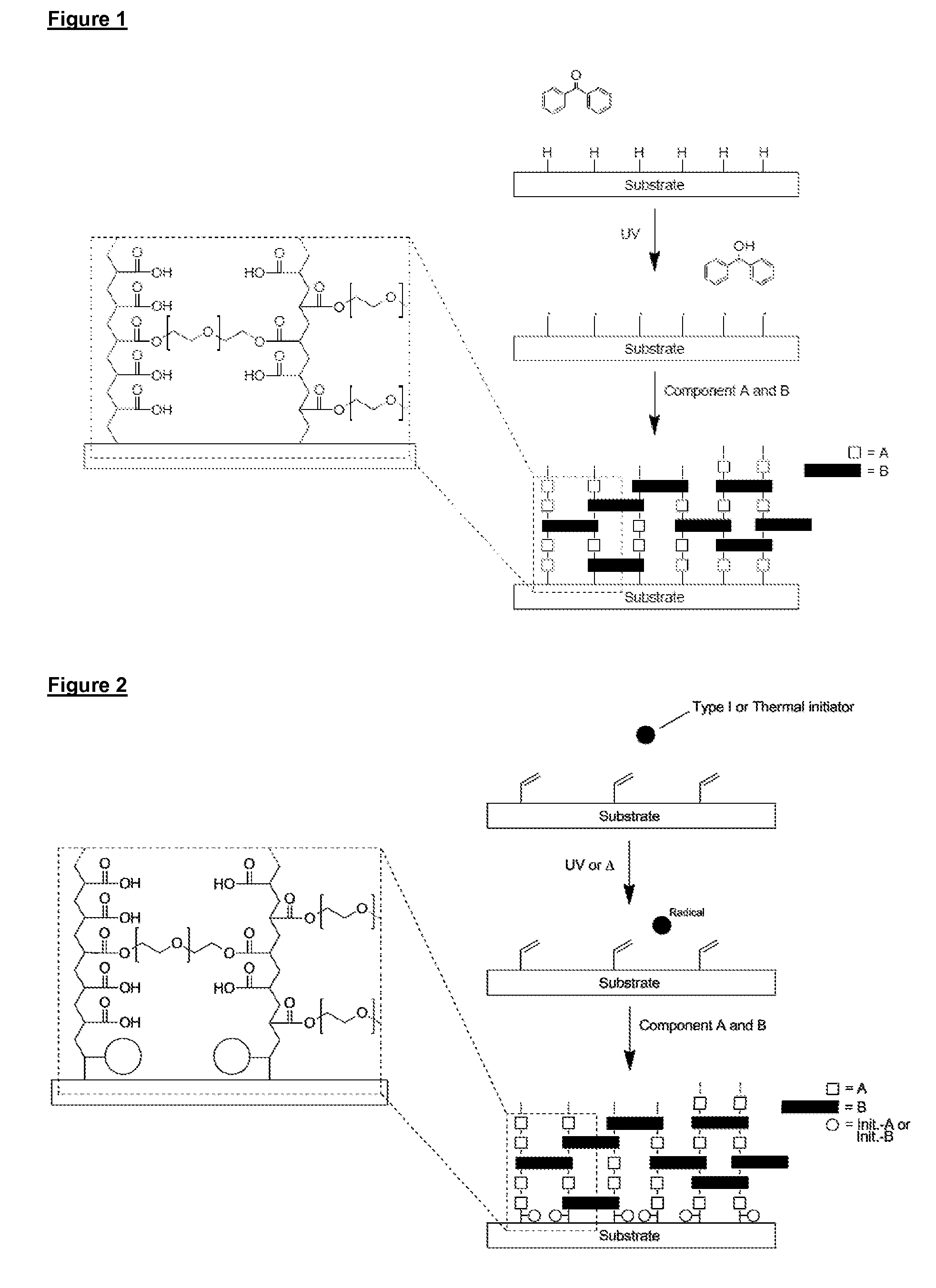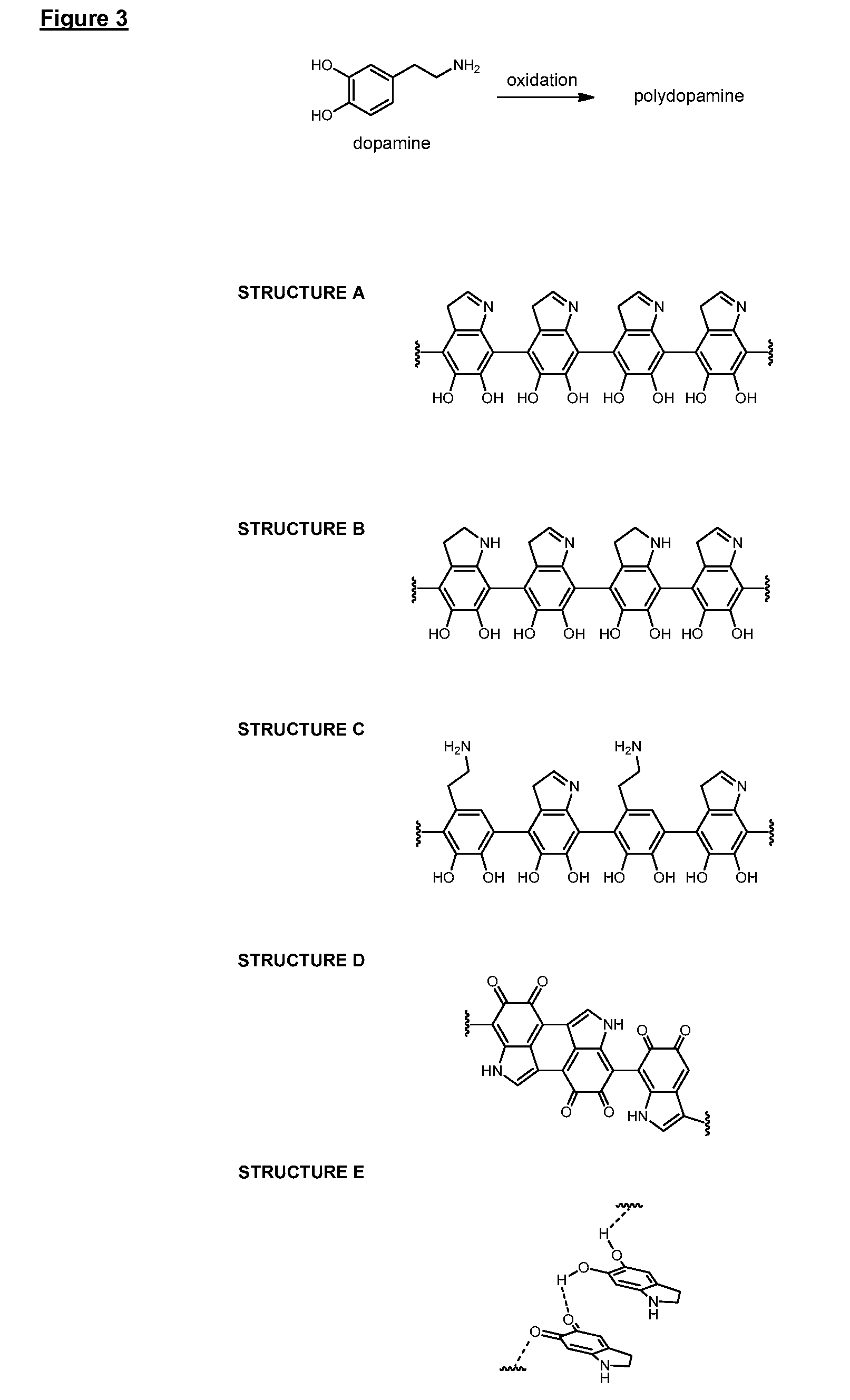Coating for substrate
a technology of hydrophilic polymer and substrate, which is applied in the field of hydrophilic coatings for substrates, can solve the problems of hydrophilic polymer migrating out of the ipn over time, affecting the safety of patients, etc., and achieves the effects of stable sterilization and aging, high lubricity and durability, and non-toxi
- Summary
- Abstract
- Description
- Claims
- Application Information
AI Technical Summary
Benefits of technology
Problems solved by technology
Method used
Image
Examples
embodiment (
ii)
[0241]In a second embodiment, reactive groups on the surface of the substrate react with at least one of components A and B and optional components C and D to covalently bind the copolymer to the surface in a process initiated by free radicals formed in a liquid phase in contact with the surface.
[0242]As illustrated in FIG. 2, in this embodiment polymerisation is initiated between polymerisable functional groups on the surface of the substrate and alkene and / or alkyne groups on components A, B and C (if present) and functional groups of component D (if present), resulting in the copolymer of components A, B and optionally C and / or D being covalently attached to the surface of the substrate (FIG. 2 illustrates only alkene groups on the surface of the substrate, and components A and B). In effect, the polymerisable functional groups on the surface of the substrate act as anchoring groups for covalent attachment of the copolymer. Suitable functional groups on the surface of the subs...
example 1
Formation of a Surface Priming Coating of a Polymer Comprising Abstractable Hydrogen Atoms on a Substrate
[0314]In the following Examples, surface priming coatings of polydopamine were formed on various substrates. QCM crystal and PVC tubing substrates were aligned horizontally when subjected to the polymerization solution. All other substrates with aligned vertically. The uniformity, adhesion and other properties of the polydopamine coatings were then analyzed and the results are summarized in Example 1a.
example 1.1
Preparation of a Surface Priming Coating of Polydopamine at pH 8 on PEBAX Shafts Using Pretreatment Method A
[0315]PEBAX shafts were pretreated according to method A. The pretreated shafts were submerged in a d.i. water solution of tris buffer (1.21 g / L) and APS (0.6 g / L), and the pH adjusted to 8.0 using HCl (1M). Dopamine (1 g / L) was added to the solution and the polymerization was allowed to proceed for either 15, 30, 60 or 120 minutes. The polydopamine primed shafts were rinsed using EtOH and dried at room temperature before being analyzed.
PUM
| Property | Measurement | Unit |
|---|---|---|
| molecular weight | aaaaa | aaaaa |
| molecular weight | aaaaa | aaaaa |
| Mw | aaaaa | aaaaa |
Abstract
Description
Claims
Application Information
 Login to View More
Login to View More - R&D
- Intellectual Property
- Life Sciences
- Materials
- Tech Scout
- Unparalleled Data Quality
- Higher Quality Content
- 60% Fewer Hallucinations
Browse by: Latest US Patents, China's latest patents, Technical Efficacy Thesaurus, Application Domain, Technology Topic, Popular Technical Reports.
© 2025 PatSnap. All rights reserved.Legal|Privacy policy|Modern Slavery Act Transparency Statement|Sitemap|About US| Contact US: help@patsnap.com



